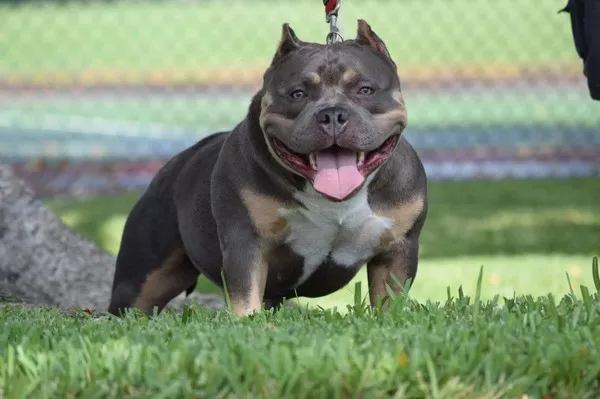Pocket Bully puppies are a popular breed known for their compact size, muscular build, and affectionate nature. As a veterinarian, it is essential to provide pet owners with the best advice on how to feed their Pocket Bully puppies to ensure they grow into healthy and strong adults. Proper nutrition plays a crucial role in the development, health, and well-being of these adorable pups. This article will cover the key aspects of feeding a Pocket Bully puppy, including nutritional requirements, recommended feeding schedules, types of food, and tips for maintaining a balanced diet.
Understanding Pocket Bully Puppies
Breed Characteristics
Pocket Bullies are a variation of the American Bully breed, known for their smaller stature while retaining the breed’s muscular and robust appearance. They are friendly, loyal, and energetic, making them excellent family pets. However, their unique build and energy levels require a specific approach to nutrition to support their growth and health.
Growth and Development Stages
Pocket Bully puppies go through several stages of growth, each with different nutritional needs:
Neonatal Stage (0-2 weeks): Newborn puppies rely solely on their mother’s milk for nutrition.
Transitional Stage (2-4 weeks): Puppies begin to open their eyes and ears and start to explore their environment.
Weaning Stage (4-8 weeks): Puppies gradually transition from mother’s milk to solid food.
Juvenile Stage (8 weeks-6 months): Rapid growth occurs, requiring high-quality, nutrient-dense food.
Adolescent Stage (6 months-1 year): Growth slows down, but puppies still need a balanced diet to support their development.
Nutritional Requirements for Pocket Bully Puppies
Macronutrients
Proteins:
Essential for muscle development and repair.
Pocket Bully puppies need a diet rich in high-quality animal proteins, such as chicken, beef, lamb, and fish.
Fats:
Provide energy and support brain development and a healthy coat.
Include healthy fats like fish oil, flaxseed oil, and chicken fat in their diet.
Carbohydrates:
Source of energy and fiber.
Opt for complex carbohydrates like sweet potatoes, brown rice, and oats.
Micronutrients
Vitamins:
Essential for overall health and immune function.
Ensure the diet includes vitamins A, D, E, and B-complex vitamins.
Minerals:
Important for bone development, muscle function, and metabolic processes.
Key minerals include calcium, phosphorus, potassium, and magnesium.
Special Nutritional Considerations
Calcium and Phosphorus:
Crucial for bone growth and development.
Maintain a proper calcium-to-phosphorus ratio to prevent skeletal issues.
Omega-3 and Omega-6 Fatty Acids:
Promote healthy skin, coat, and brain development.
Include sources like fish oil and flaxseed oil.
Probiotics and Prebiotics:
Support digestive health.
Include foods with probiotics (e.g., yogurt) or prebiotics (e.g., chicory root).
Types of Food for Pocket Bully Puppies
Commercial Puppy Food
Dry Kibble:
Convenient and long-lasting.
Choose high-quality brands with named animal proteins as the first ingredient.
Wet Food:
Higher moisture content, which can be beneficial for hydration.
Look for grain-free options with real meat and vegetables.
Puppy Formulas:
Specially formulated to meet the nutritional needs of growing puppies.
Ensure the product is labeled as “complete and balanced.”
Homemade Diets
Raw Diet:
Consists of raw meat, bones, fruits, and vegetables.
Ensure the diet is well-balanced and consult with a veterinarian to avoid nutritional deficiencies.
Cooked Diet:
Homemade meals with cooked meat, grains, and vegetables.
Use a variety of protein sources and include supplements to meet nutritional needs.
Hybrid Feeding
Combination of Commercial and Homemade:
Mix commercial puppy food with homemade meals.
Provides variety and ensures nutritional completeness.
Feeding Schedule and Portions
Feeding Frequency
8-12 Weeks:
Feed 4 times a day.
Puppies have small stomachs and high energy needs.
3-6 Months:
Reduce to 3 meals a day.
Growth rate is still high, but the stomach capacity has increased.
6-12 Months:
Feed 2 times a day.
Growth slows down, and a more regular feeding schedule is appropriate.
Portion Control
Caloric Needs:
Follow feeding guidelines on commercial food packages.
Adjust based on puppy’s activity level, growth rate, and body condition.
Monitoring Growth:
Regularly weigh your puppy and adjust portions accordingly.
Consult with a veterinarian to ensure the puppy is growing at a healthy rate.
Tips for a Balanced Diet
Consistency
- Maintain a consistent feeding schedule.
- Avoid sudden changes in diet to prevent digestive issues.
Hydration
- Ensure fresh water is always available.
- Monitor water intake, especially if feeding dry kibble.
Avoiding Harmful Foods
- Toxic Foods: Chocolate, grapes, onions, garlic, and certain artificial sweeteners.
- Table Scraps: Can lead to obesity and nutritional imbalances.
Supplements
- Only use supplements recommended by a veterinarian.
- Avoid over-supplementing, which can cause health issues.
Common Feeding Problems and Solutions
Picky Eaters
Gradual Introduction:
Introduce new foods gradually to avoid overwhelming your puppy.
Mix new food with familiar food to encourage acceptance.
Flavor Enhancers:
Use bone broth or a small amount of wet food to enhance the flavor of dry kibble.
Overfeeding
Portion Control:
Measure portions accurately.
Avoid free-feeding to prevent overeating.
Regular Exercise:
Ensure your puppy gets regular exercise to burn off excess calories.
Monitor weight and adjust food intake as needed.
Allergies and Sensitivities
Identify Allergens:
Monitor for signs of allergies, such as itching, digestive upset, or ear infections.
Conduct an elimination diet to identify specific allergens.
Hypoallergenic Diet:
Use hypoallergenic commercial diets or consult a veterinarian for a homemade diet plan.
Avoid common allergens like chicken, beef, dairy, and grains.
See also: What Shih Tzus Like to Eat
Conclusion
Feeding a Pocket Bully puppy requires careful consideration of their unique nutritional needs and growth stages. Providing a balanced diet rich in high-quality proteins, healthy fats, and essential vitamins and minerals is crucial for their development and overall health. Whether you choose commercial puppy food, homemade diets, or a combination of both, consistency, portion control, and attention to potential feeding problems are key to ensuring your Pocket Bully puppy thrives. By following these guidelines and consulting with a veterinarian, you can help your puppy grow into a healthy, happy, and strong adult dog.


